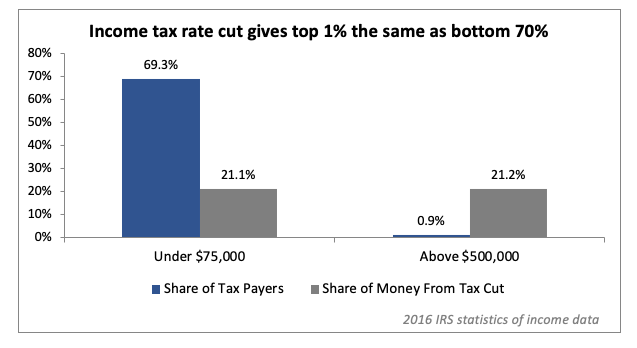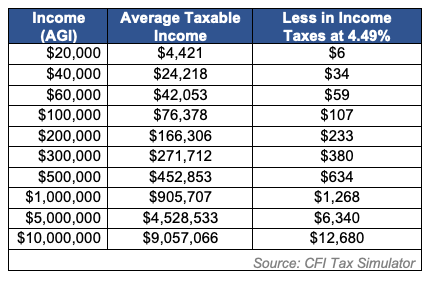A Delicate Balance: Oil and Gas in Colorado’s Economy

Highlights
- While different approaches exist for how best to articulate the economic impact of the oil and gas industry, Colorado Fiscal Institute’s analysis of federal economic data finds total jobs attributable directly to oil and gas development averaged just over 29,300, or less than 1 percent of total covered employment in Colorado, from 2006-2016.
- State data show economic activity created directly by oil and gas development averaged a modest 2.5 percent of total state GDP from 2014-2017.
- Other issues outside of the scope of changing oil and gas regulations should be considered, including how development of new technologies and other efficiencies, as well as the global energy economy and commodity prices, will affect the industry; and the economic impact of health outcomes associated with air pollution.
Introduction
Colorado’s environment, health, energy, and economy always live in a delicate balance with one another. This balance has been shaken in recent years, as a record-high number of oil and gas wells mean Coloradans are seeing drilling operations closer to residential neighborhoods than ever before. This tension became front page news after a deadly home explosion in 2017 in the town of Firestone was determined to have been caused by an improperly capped natural gas well.
Though the Firestone explosion was an extreme example, accidents involving oil and gas operations are not an unusual occurrence according to state data compiled by The Denver Post in 2018. For instance, while the annual number of oil spills is down from a peak of 792 in 2014, there were still 590 such incidents in 2018 – about 11 per week. In total, the Colorado Oil and Gas Conservation Commission (COGCC) has issued nearly $20 million in fines for regulatory violations since 2014 according to their annual reporting.
With residents and environmental advocates calling for solutions, state legislative leaders introduced a bill (Senate Bill 19-181) in 2019 that would, among other provisions, allow local governments to determine whether or not to allow oil and gas industry activity in their towns, cities, and counties. Groups representing the oil and gas industry have been vocal in their opposition to the proposal, which they say could have the effect of severely limiting drilling, or even ending the industry altogether. Such consequences, they argue, would have a devastating effect on Colorado’s economy.
As is the case with regulation of any industry, there are always trade-offs between the freedom of those industries to operate without limitation, and the freedom of the people to determine what legal safeguards are necessary for their safety and health. Colorado also has a long history of local control over various economic sectors, both public and private, including local school districts controlling curriculum and local governments deciding whether to allow certain businesses to operate within their boundaries.
Lawmakers must always strive to strike the right balance between these freedoms, while being mindful of the potential economic consequences if they fall out of balance. Therefore, it is imperative they have all the facts about the role any industry plays in the overall economy.
Oil and gas and Colorado’s economy
Though analyzing the economic impact of the oil and gas industry may seem like a straightforward task on its face, articulating it is complicated. Industry trade groups say the total impact of the oil and gas industry in Colorado’s economy as a share of GDP is as high as $13.5 billion. However, data from state and federal sources show the total economic impact of the industry to be significantly lower. The discrepancy between these figures can, at least in part, be attributed to differences in how much economic activity is directly created by oil and gas development, and how much comes from other services indirectly related to it. The Colorado Fiscal Institute limits our analysis to the former.
According to the nonpartisan Legislative Council, the total economic impact of oil and gas extraction varied during a three-year period between 2014-2016 from a high of $11.3 billion (3.7 percent of GDP) in 2014 to a low of just under $6 billion (1.8 percent of GDP) in 2016. That averages out to just under 2.5 percent of the state’s total GDP during the same three-year period.

Similar differences in data exist when the focus turns to the number of jobs sustained by oil and gas development, with industry groups reporting a number anywhere from 185,000-200,000 jobs in Colorado.
CFI’s examination of Bureau of Economic Analysis statistics for direct oil and gas employment shows the number of jobs is modest, averaging just over 29,000 in the decade between 2006 and 2016, though the overall economic strength of the state has buoyed the most recent number of jobs to over 40,000 in 2016.

What could be interpreted as a disagreement between these data should instead be seen as a range. On the low end, the industry employs an average of less than one percent of the workforce, with the high end around 5 percent of total employment. Similarly, the industry accounts for anywhere from 2.5 percent of GDP on the low end to what has historically been as high as 4 percent on the high end.
Ultimately, while Senate Bill 19-181 would present significant regulatory changes for oil and gas developers, it would not ban drilling or any drilling techniques, including hydraulic fracturing (also known as fracking). Additionally, the likelihood of a local government like Weld County – where around 80 percent of current oil and gas extraction activities take place – banning development is low. These factors must be taken into account when estimating the potential loss in economic output or jobs from changes to oil and gas regulations.
Impact on the state budget
Another argument raised by critics of SB19-181 is the potential for a reduction in state and local tax revenue generated from oil and gas activity. Industry-backed analysis released this month shows the state could stand to lose up to $1.3 billion a year in revenue over the next 10 years if all oil and gas operations in the state were to cease. Legislative Council’s research, on the other hand, paints a slightly less dire picture; with just under $570 million in annual tax receipts in Fiscal Year 2016-17, the lion’s share going to local property taxes. CFI’s analysis shows the oil and gas industry contributes just one-quarter of one percent of Colorado’s sales and use tax and only 6.6 percent of the state’s corporate income tax.
If the economy is able to absorb most of the potential lost jobs and share of the GDP, the implications for state and local tax revenue may end up being minimal.

Non-regulatory factors
Regulations are not the only reason why the economic impact of the industry might change, or the number of jobs supported by the industry might rise or fall. For instance, federal data show that while new-well oil production per rig in the Niobara region (which includes most of Northeastern Colorado) has risen, the actual number of oil and natural gas wells has fallen. The reason for the increase in production while the number of new drilling rigs has declined is advancements in technology, including horizontal drilling and hydraulic fracturing. Technological advances like these mean production can increase substantially while the number of jobs created by the industry may be much smaller.

Another factor to consider is the natural boom and bust cycle of the industry. This cycle is tied to the global economy, which even the staunchest critic of oil and gas regulation would admit effects the industry regardless of the regulatory system of any particular state government.
Finally, one impact of oil and gas development isn’t calculated by most economic analyses. The environmental impact of the industry, whether through the long-term consequences of global climate change, or through increased health problems from air pollutants caused by oil and natural gas drilling, is not reflected in calculations of jobs and GDP. Poor air quality, in part due to oil and gas development, contributes to increased incidents of asthma, more hospital visits, and lower productivity due to missed days of school and work. (For more information about how reduction in fossil fuel consumption for electric generation can improve health outcomes, see CFI’s analysis of the Colorado Energy Plan.)
Conclusion
Colorado’s oil and gas industry is like any business interest or government entity. When state government considers the best way to balance the interests of a particular industry with the health and well-being of citizens, a delicate balance must be struck. That balance must take into account the risks associated with a lack of action, and the economic or other consequences of any potential tightening of rules and regulations.
Estimates of the economic impact of the industry vary widely. How close Colorado is to one end of the range or the other depends on who is analyzing the numbers and how they are analyzing them. Either way, Colorado’s diverse economy is strong and could very well absorb whatever losses occur due to policy changes.
Ultimately, nothing in Senate Bill 19-181, or any change in existing law, will change the role of the global economy and the broader oil and gas economy. Business cycles, including booms and busts, will continue with or without passage of the bill.
Lawmakers should take this into consideration, along with the potential risks of doing nothing at all, when they consider their votes on Senate Bill 19-181.
Abbey Pizel contributed to this report.























